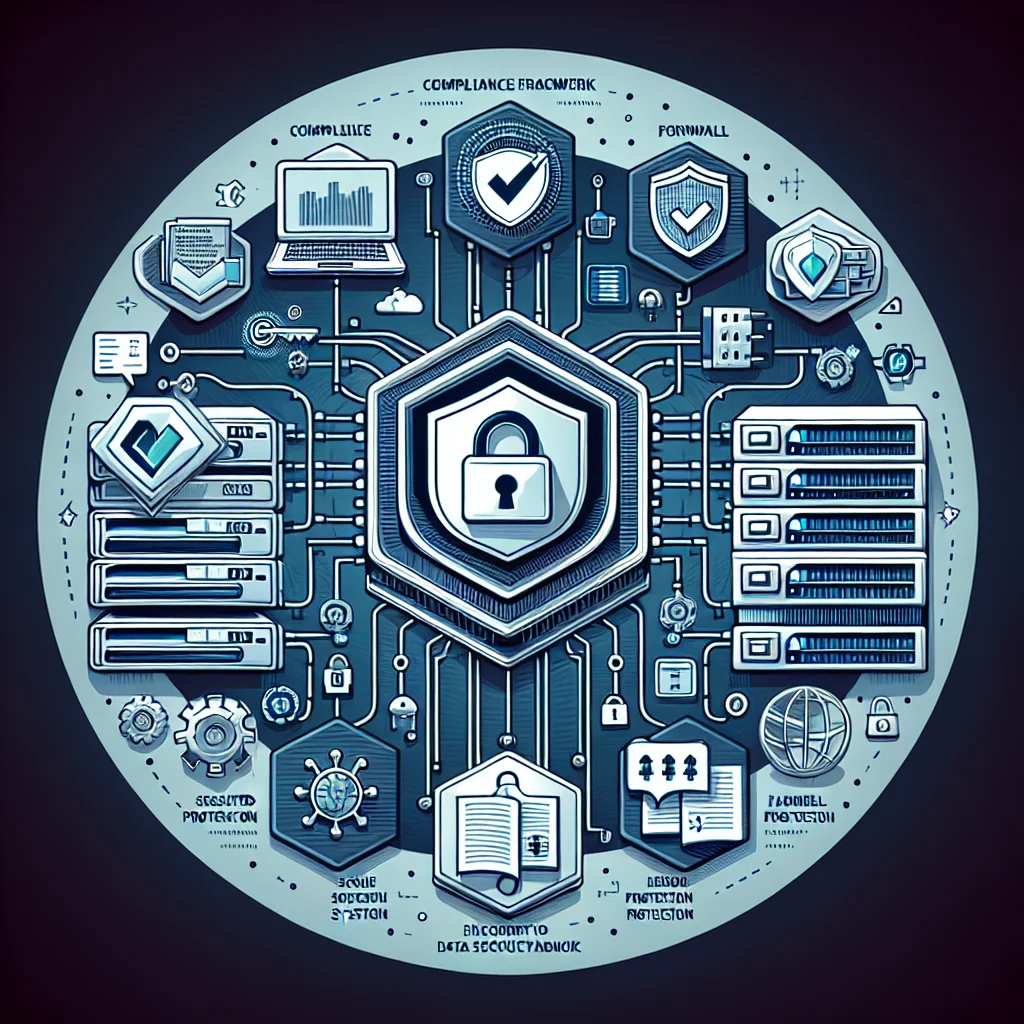In the rapidly evolving digital landscape of the Middle East, Chief Information Security Officers (CISOs) face unprecedented challenges. Among these, ensuring SWIFT compliance stands out as a critical priority. But what exactly is SWIFT compliance, and how can CISOs, particularly in the banking sector, effectively manage it?
What is SWIFT Compliance?
The Society for Worldwide Interbank Financial Telecommunication (SWIFT) provides a secure, standardized communication platform for financial transactions. Ensuring compliance with SWIFT’s Customer Security Programme (CSP) is essential for maintaining the integrity and security of financial operations.
What are the core principles of SWIFT compliance?
- Secure Your Environment: Protect your local environment against cyber threats by implementing strong access controls and conducting regular vulnerability assessments.
- Know and Limit Access: Ensure that only authorized individuals have access to critical systems and data.
- Detect and Respond: Implement robust monitoring systems to detect and respond to suspicious activities in real-time.
- Regular Audits: Conduct regular audits to ensure compliance with SWIFT standards and identify areas for improvement.
- Employee Training: Provide ongoing training for employees on cybersecurity best practices and SWIFT compliance requirements.
- Incident Response Plan: Develop and maintain a clear incident response plan to address potential security breaches effectively.
- Data Encryption: Use strong encryption methods for data at rest and in transit to protect sensitive information.
- Third-party Risk Management: Assess and manage risks associated with third-party vendors that have access to your systems.
- Update and Patch Systems: Regularly update and patch all systems and software to protect against known vulnerabilities.
- Access Control Policies: Establish and enforce strict access control policies to limit access to sensitive areas.
- Continuous Monitoring: Implement continuous monitoring of networks and systems to identify and mitigate threats swiftly.
- Threat Intelligence Sharing: Participate in threat intelligence sharing initiatives to stay informed about emerging threats.
- Backup and Recovery: Ensure regular backups of critical data and have a recovery plan in place to restore operations quickly.
- Segmentation of Networks: Use network segmentation to minimize the impact of a potential security breach.
- Compliance Documentation: Maintain thorough documentation of compliance efforts and security policies for accountability.
- User Behavior Analytics: Employ user behavior analytics tools to detect unusual patterns and potential insider threats.
- Physical Security Measures: Implement physical security measures to protect data centers and critical infrastructure.
- Regular Risk Assessments: Conduct regular risk assessments to identify and address vulnerabilities in your systems.
- Limit Remote Access: Control and monitor remote access to critical systems to reduce potential attack vectors.
- Engage with SWIFT Communities: Actively engage with SWIFT communities and forums to share knowledge and best practices for compliance.
The Role of CISOs in Ensuring SWIFT Compliance
CISOs play a pivotal role in the assurance of SWIFT compliance within their organizations. As the guardians of information security, they must foster a culture of compliance that permeates every level of the institution. This involves not only developing and implementing comprehensive security policies but also facilitating ongoing training and awareness programs for employees. By ensuring that staff members understand the importance of cybersecurity protocols and their role in maintaining SWIFT compliance, CISOs can significantly mitigate risks associated with financial transactions.
Moreover, CISOs must collaborate closely with various stakeholders, including IT teams, risk management officers, and executive leadership, to create a unified approach toward achieving compliance. This collaboration facilitates the sharing of vital information and resources, enabling organizations to swiftly respond to evolving threats and regulatory requirements. Additionally, regular audits and assessments can help organizations identify gaps in their current SWIFT compliance strategies, allowing for timely remediation measures to be enacted.
How often should we review our SWIFT compliance?
Regular audits and reviews are crucial. Ideally, a comprehensive review should be conducted annually, with more frequent checks for specific controls and processes.
What are the penalties for non-compliance?
Non-compliance can lead to significant financial penalties, reputational damage, and even exclusion from the SWIFT network, which would severely impact operational capabilities.
Frequently Asked Questions about SWIFT Compliance
- Why is SWIFT compliance important?
SWIFT compliance is crucial for maintaining the integrity, confidentiality, and security of financial transactions, protecting against fraud, and ensuring adherence to international banking regulations.
- What does SWIFT’s Customer Security Programme (CSP) entail?
The CSP outlines a set of security controls and requirements that SWIFT members must implement to protect their local environments against cyber threats.
- How can CISOs ensure compliance with SWIFT standards?
By implementing robust security measures, conducting regular audits, providing employee training, and fostering a culture of compliance within their organizations.
- What are the penalties for non-compliance?
Non-compliance can lead to reputational damage, financial penalties, and increased scrutiny from regulators and partners.
- Do all financial institutions need to comply with SWIFT?
Yes, any financial institution that uses the SWIFT network for transactions must comply with its security standards to ensure the safety of their operations.
- What role does employee training play in compliance?
Employee training is essential for raising awareness about security risks and ensuring that staff understand their responsibilities in maintaining compliance.
- How often should audits be conducted?
Regular audits should be conducted at least annually, although more frequent assessments may be necessary depending on the organization’s risk profile.
- What is the significance of data encryption in SWIFT compliance?
Data encryption protects sensitive information from unauthorized access, both during transmission and while stored.
- How can organizations manage third-party risks?
Organizations should assess third-party vendors for security practices, contractual obligations regarding data protection, and conduct regular reviews.
- What are the benefits of continuous monitoring?
Continuous monitoring helps identify and address potential vulnerabilities in real-time, enabling swift responses to security threats.
- What is an incident response plan, and why is it necessary?
An incident response plan outlines steps to take in the event of a security breach, ensuring that organizations can respond effectively and mitigate damage.
- Is remote access a risk to SWIFT compliance?
Yes, remote access can introduce vulnerabilities; organizations should monitor and control remote access tightly to reduce potential security risks.
- How does network segmentation enhance security?
Network segmentation limits the impact of security breaches by isolating different segments, preventing attackers from moving laterally within the network.
- What role does collaboration play in compliance efforts?
Collaboration among IT, risk management, and executive teams enhances communication and resource sharing, improving overall compliance strategies.
- Are there specific tools for user behavior analytics?
Yes, there are various tools available that help organizations monitor user activities and detect any unusual patterns indicative of potential insider threats.
- What is the importance of physical security measures?
Physical security protects data centers and critical infrastructure from unauthorized access and reduces the risk of physical attacks.
- How can threat intelligence sharing benefit organizations?
Participating in threat intelligence sharing networks enables organizations to stay informed about emerging threats and reduces the chances of falling victim to cyber attacks.
- What types of vulnerabilities should organizations regularly assess?
Organizations should assess issues such as outdated software, configuration errors, and inadequate access controls that can compromise their security posture.
- How can organizations engage with SWIFT communities?
Organizations can engage through attending forums, participating in webinars, and joining working groups that focus on best practices for SWIFT compliance and security.
SWIFT Compliance for Fintechs
Fintechs, while typically more agile than traditional banks, face unique challenges when it comes to SWIFT compliance. These organizations must balance rapid innovation with stringent security requirements. Here’s how fintechs can ensure they meet SWIFT standards:
- Adopt Scalable Security Solutions: Implement security measures that can scale with your business growth. Cloud-based security solutions often provide the flexibility fintechs need.
- Continuous Education and Training: Regularly train your team on the latest compliance requirements and cybersecurity best practices.
- Collaborate with Established Banks: Partnering with traditional financial institutions can provide fintechs with valuable insights and resources for maintaining compliance.
Operational Action Plan
Creating an effective action plan for SWIFT compliance involves several key steps:
- Conduct a Risk Assessment: Identify potential vulnerabilities in your current systems and processes.
- Develop a Compliance Roadmap: Outline the steps needed to achieve compliance, including timelines and responsible parties.
- Implement Security Controls: Put in place the necessary security measures, such as multi-factor authentication and intrusion detection systems.
- Monitor and Review: Continuously monitor your systems for compliance and regularly review your security policies and procedures.
SWIFT and ISO 20022
As financial institutions worldwide pivot towards more robust, interoperable messaging standards, the relationship between SWIFT and ISO 20022 has become increasingly important. ISO 20022 is an international standard for electronic data interchange between financial services, offering a richer format for messages that enables greater detail and flexibility. This new standard allows for improved data quality and processing efficiency, facilitating smoother transactions and enhanced regulatory reporting.
The transition to ISO 20022 enables organizations to leverage advanced functionalities such as real-time payments and enhanced compliance checks, making it a critical component in modernizing payment infrastructures. SWIFT has mandated a migration to ISO 20022 for its messaging services by 2025, urging financial institutions to start their preparations now. Adopting this standard will not only streamline communication but also align with global regulatory standards, ultimately contributing to improved operational resilience and customer satisfaction.
Common Controls with Other Frameworks
SWIFT compliance shares many controls with other cybersecurity frameworks, such as ISO 27001, NIST, and ISO 20022. By aligning your SWIFT compliance efforts with these frameworks, you can streamline your security operations and reduce redundancy.
Key Common Controls Include:
- Access Control (ISO 27001: A.9, NIST SP 800-53: AC, ISO 20022: 3.10): Ensuring that only authorized personnel can access sensitive information.
- Incident Response (ISO 27001: A.16, NIST SP 800-53: IR, ISO 20022: 3.11): Having a robust plan in place for detecting and responding to security incidents.
- Audit Logging (ISO 27001: A.12.4, NIST SP 800-53: AU, ISO 20022: 3.12): Maintaining detailed logs of all system activity to identify and investigate anomalies.
- Risk Management (ISO 27001: A.6, NIST SP 800-53: RA, ISO 20022: 3.8): Regularly assessing and mitigating risks to your security posture.
Automated Compliance Platforms and SWIFT : How They Can Help
An automated compliance platform such as ComplyHawk can play a crucial role in enhancing SWIFT compliance for organizations by streamlining and simplifying the complex regulatory landscape. These platforms provide real-time monitoring and reporting features that help organizations effortlessly track their compliance status and quickly identify any lapses or non-conformities. By automating routine compliance tasks, such as data entry, policy updates, and security assessments, these systems significantly reduce the risk of human error and allow compliance teams to focus on more strategic initiatives.
Additionally, automated compliance tools integrate seamlessly with existing security infrastructure, offering insights into potential vulnerabilities while ensuring adherence to SWIFT’s stringent security requirements. They can also facilitate the collection and analysis of data required for audits and assessments, thereby making the process less labor-intensive.
Overall, leveraging automated compliance platforms not only helps organizations maintain SWIFT compliance more efficiently but also supports a proactive approach to risk management and security.
Conclusion
For CISOs in the Middle East, navigating SWIFT compliance is a complex but essential task. By understanding the core principles, addressing common FAQs, and developing a comprehensive action plan, you can ensure your organization remains compliant and secure.
At the heart of your strategy should be continuous education, collaboration, and leveraging common controls with other frameworks. By doing so, you not only achieve SWIFT compliance but also strengthen your overall cybersecurity posture.
Take the next step in fortifying your financial institution’s security—book a consultation with our experts today and demo with ComplyHawk



